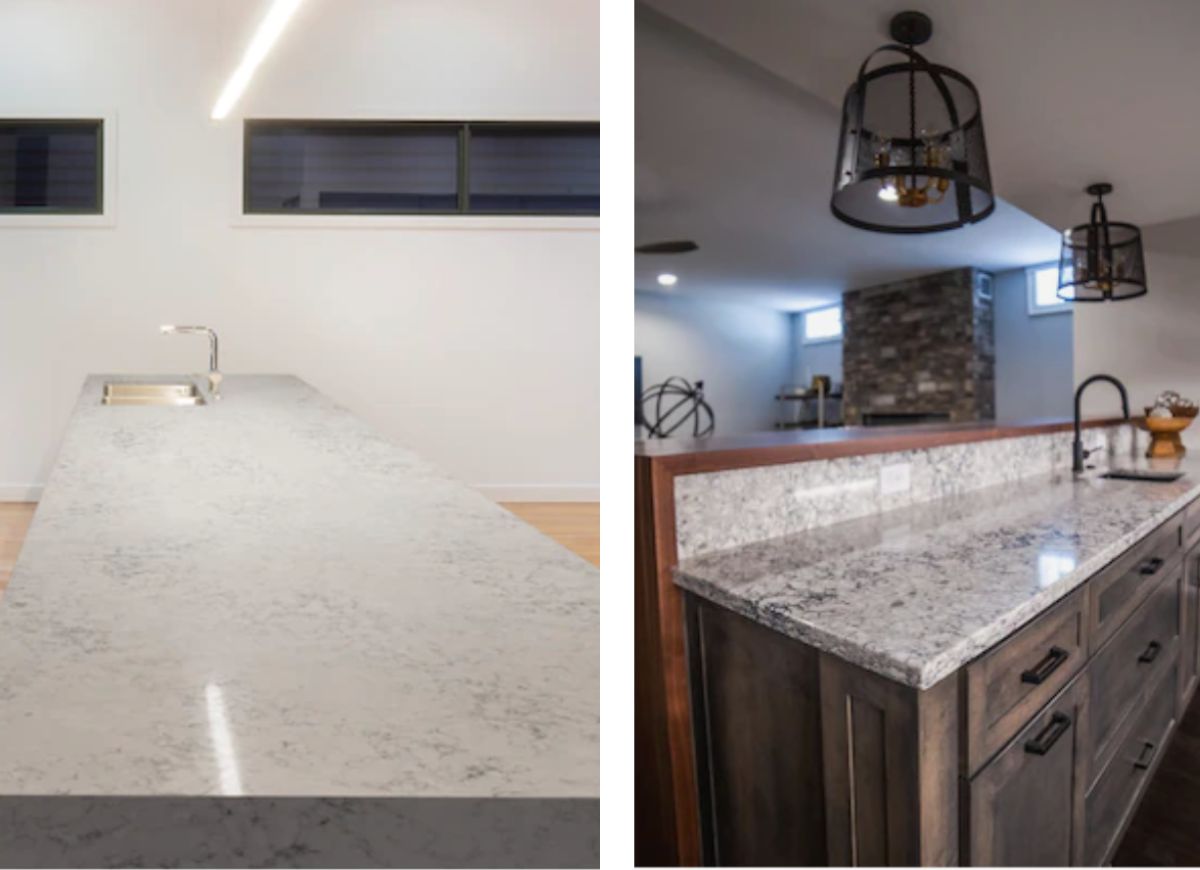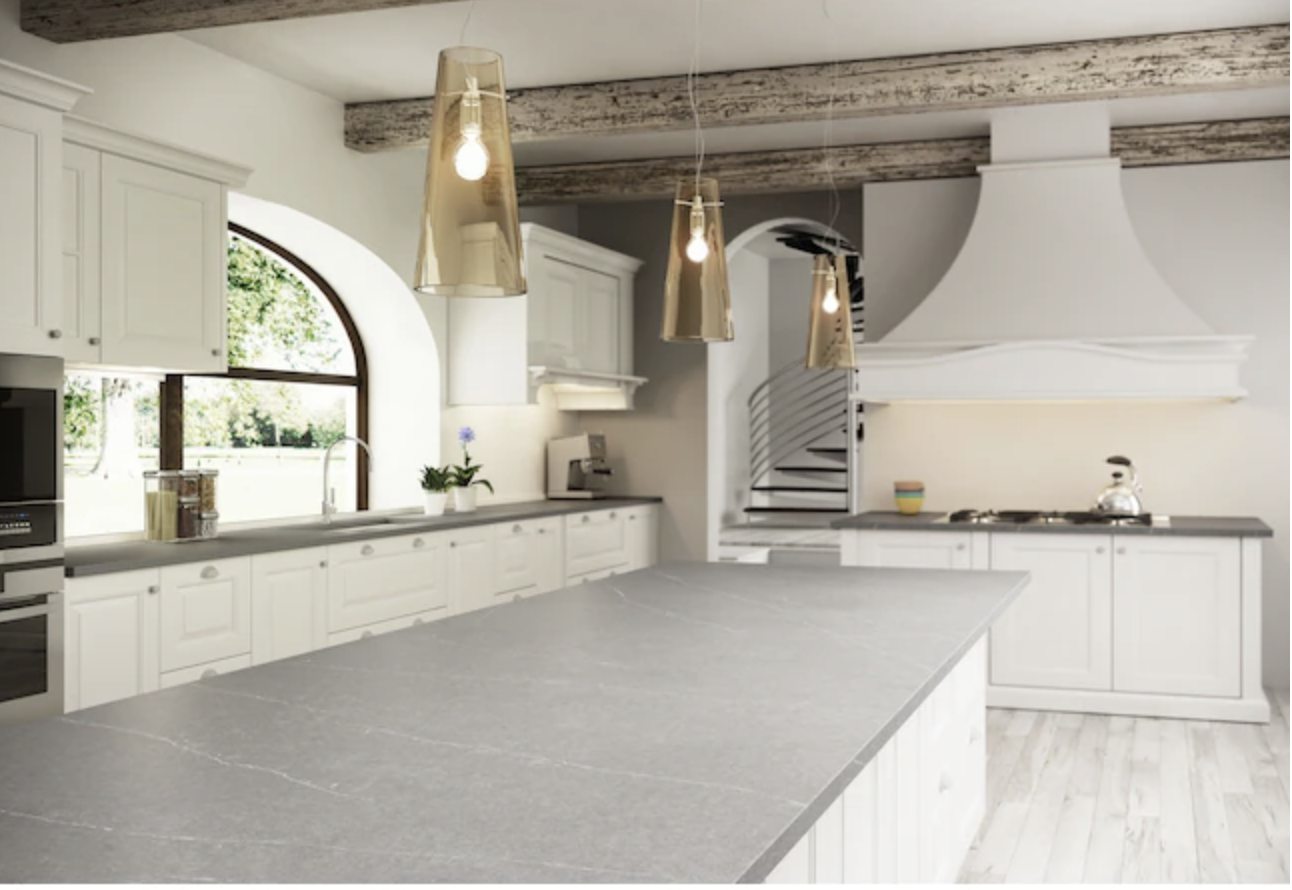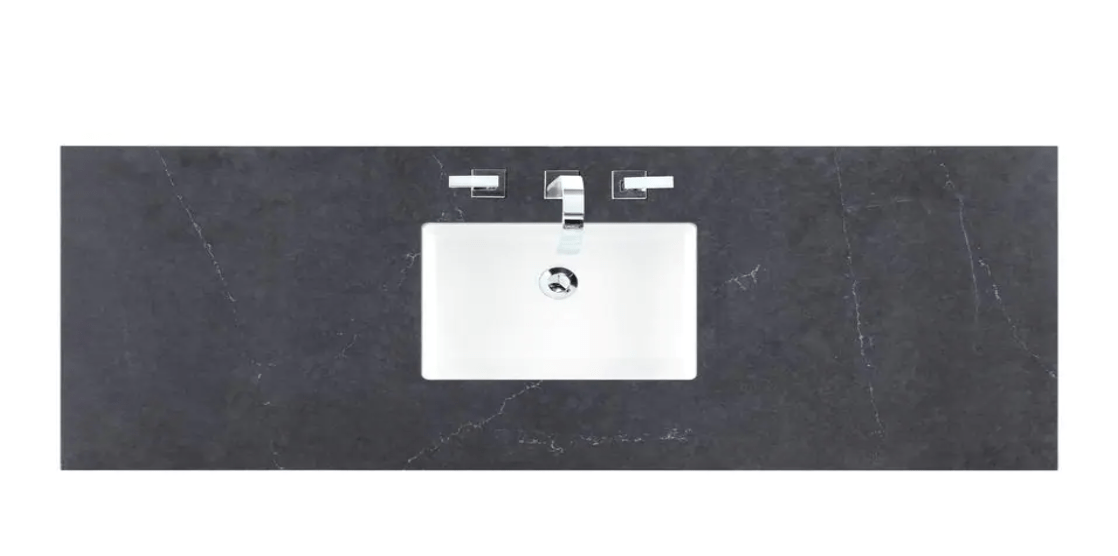

We may earn revenue from the products available on this page and participate in affiliate programs. Learn More ›
When you’re planning a kitchen remodel, countertops are one of the most important components you’ll select. Not only do you want to choose a durable and easy-to-clean material, but you also want something that pulls the space together with its color and patterns. Many homeowners looking for the right countertop material for their kitchen may compare Silestone vs. quartz countertops.
These same individuals are often surprised to learn that Silestone is actually a name brand of quartz countertops from Cosentino. Silestone countertops are known for their exceptional durability, easy maintenance, and impressive selection of colors and patterns. Read on to learn more about Silestone quartz to decide if it’s the best kitchen countertop material for you.
RELATED: Corian vs. Quartz Countertops: What’s the Difference Between These Popular Materials?
What is Silestone quartz?

So, what is Silestone? Silestone quartz is a type of engineered stone countertop made by design company Cosentino. The countertops are primarily made of quartz, a hard mineral, with the addition of a few other recycled materials, resins, and adhesives. Cosentino’s sustainable HybriQ+ products—including Silestone—contain at least 20 percent recycled glass or other materials.
Silestone quartz slabs come in three thickness options: 1.2 centimeters, 2 centimeters, and 3 centimeters (or about ½ inch, ¾ inch, and 1 inch). Silestone is easy to find, both at countertop and kitchen remodeling stores, as well as at home improvement stores, like The Home Depot or Lowe’s.
Silestone countertops are highly durable.
Silestone’s durability makes it a popular counter material. On the Mohs hardness scale, quartz is rated 7 (with diamond, the hardest mineral, being a 10). This is comparable to granite’s rating between 6 and 7 on the scale, making Silestone harder than many other popular natural stones, such as marble and limestone.
Silestone countertops’ hardness make them long-lasting and scratch-resistant. In the event that a Silestone counter is damaged, minor chips and scratches can often be addressed at home with buffing or superglue. Silestone is also heat-resistant. However, as with most other types of natural and engineered stone, it’s still advised to place a trivet under a hot pan instead of placing it directly on a Silestone countertop.
The non-porous nature of Silestone makes it easy to clean and keep germ-free.
As a non-porous material, a Silestone countertop is easy to clean and resists stains. Unlike natural stone countertops, such as granite or marble, Silestone will not absorb liquids. Moreover, Silestone maintenance is much less involved than what some other materials require. Silestone counters do not need to be sealed, re-sealed, or sanded to maintain their ability to resist staining. Silestone is also naturally glossy, which means you won’t need to worry about polishing it much, if at all.
Cleaning Silestone quartz countertops is relatively straightforward. Even though the material resists staining, it is still a good idea to lean up spills right away before they dry on the counter. Use a nonabrasive sponge with a surface or glass cleaning solution to keep your Silestone counters clean. A damp microfiber cloth can also help with cleaning Silestone.
RELATED: 6 Important Things to Know About Solid Surface Countertops

Silestone quartz is available in a wide variety of styles, colors, and textures.
As with other engineered stone countertops, you’ll find that Silestone quartz comes in a wide range of colors, textures, and styles. Silestone colors include white, cream, blue, gray, pink, brown, yellow, or even orange, a far more extensive list than you’ll find if you’re looking at natural stones, such as quartzite, granite, or marble.
Beyond the color of the stone, Silestone quartz is available with different patterns, finishes, and edges to match any decor scheme or preferences. Choose from fine-grain, coarse-grain, veined, or plain patterns and complete the look with a suede texture, a polished texture, or a volcanic texture. Finally, choose from a wide assortment of edging options, such as mitered, bullnose, ogee, and straight beveled.
Just be prepared; when combining customization options with the material’s durability and non-porous design, the price of Silestone often falls on the high end compared to some other natural or engineered stone materials.
RELATED: The Best Kitchen Remodeling Companies in America
Applications for Silestone go well beyond the kitchen counter.

Silestone is a popular choice for many kitchen remodeling projects. However, this material offers versatile uses that extend past the kitchen counter. Other uses for Silestone within the kitchen include sinks and flooring.
Numerous uses outside the kitchen are possible as well. You can use Silestone in the bathroom for a vanity, sink, shower tray, cladding, or flooring. Silestone furniture is also available to offer a unique feel to your space. With its impressive durability, wide range of color and style options, and easy care and maintenance, Silestone furniture has a lot to offer to a space.
